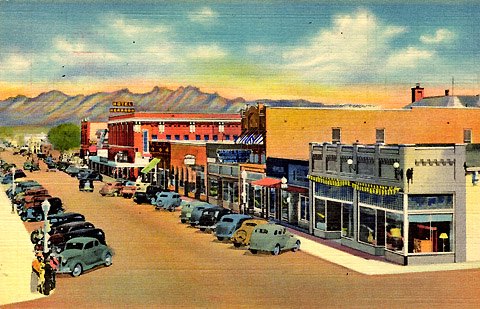New Mexico: City Expands Traffic Cameras Despite Accident Increase
The Las Cruces, New Mexico city council voted Monday to partially obey a New Mexico Department of Transportation (NMDOT) to remove red light cameras and speed cameras from the state right-of-way by May 18. State officials are concerned with the negative impact that the devices have on safety, but Las Cruces officials emphasized the need to “work around” the state in expanding the red light camera program even though the city has seen an increase in accidents where photo enforcement has been installed.
Currently, Redflex runs the dual speed and red light cameras at four locations. The council agreed to ask Redflex Traffic Systems, the Australian company that owns and operates the cameras, to deactivate the intersection of Main Street and Solano Drive. Although NMDOT ordered cameras down at the lucrative Valley Drive and Avenida de Mesilla intersection, Las Cruces will only take one of them down, claiming that a second device is located within the city’s jurisdiction. It will also add mobile speed camera vans to increase the number of citations issued citywide.
The safety results do not appear to provide a basis for expansion. Comparing a year’s worth of data before the devices were installed at three intersections to a year after, the number of collisions increased 13 percent from 53 to 60. The largest increase was in property damage accidents while injury collisions did not reduce significantly. The numbers would have looked even worse had the city included results from the intersection of Lohman and Telshor where officials claimed “construction” caused the significant increase in accidents. On the other hand, the city finance department estimated that the cameras would generate $5,012,847 in revenue through fiscal 2011.
Although most of the city council supports photo enforcement, Redflex has lost so many camera contracts this year that it would likely exercise its contract to prevent the city from ending the camera program entirely.
“We are very interested in working with the city,” Redflex account director Bob Warner said. “If the city were to take the position that they would not want to continue with the cameras, that would have to be something our executive committee would have to take a look at.”
[Courtesy: TheNewspaper.com]
More by The Newspaper
Latest Car Reviews
Read moreLatest Product Reviews
Read moreRecent Comments
- ToolGuy™ I respect what the seller is doing, but this vehicle is not for me. (Seller doesn't care, has two people lined up already.)
- SCE to AUX How well does the rear camera work in the rain and snow?
- MaintenanceCosts The Truth About Isuzu Troopers!
- Jalop1991 MC's silence in this thread is absolutely deafening.
- MaintenanceCosts Spent some time last summer with a slightly older Expedition Max with about 100k miles on the clock, borrowed from a friend for a Colorado mountain trip.It worked pretty well on the trip we used it for. The EcoBoost in this fairly high state of tune has a freight train feeling and just keeps pulling even way up at 12k ft. There is unending space inside; at one point we had six adults, two children, and several people's worth of luggage inside, with room left over. It was comfortable to ride in and well-equipped.But it is huge. My wife refused to drive it because she couldn't get comfortable with the size. I used to be a professional bus driver and it reminded me quite a bit of driving a bus. It was longer than quite a few parking spots. Fortunately, the trip didn't involve anything more urban than Denver suburbs, so the size didn't cause any real problems, but it reminded me that I don't really want such a behemoth as a daily driver.


































Comments
Join the conversation
As usual, the information that could potentially justify the cameras is left out. I don’t like red-light cameras and I hope the data shows they don’t work, but it isn’t enough to just say “injury accidents did not reduce significantly.” Most injury reports are probably minor whiplash from rear-enders, which are expected to increase at intersections with cameras. So how about side-impact crashes and major injuries or deaths? THOSE are the stats that will make or break red-light cameras. There’s no strong case against them without that information.
And, people wonder why some of us don't trust the government to have our best interests at heart.